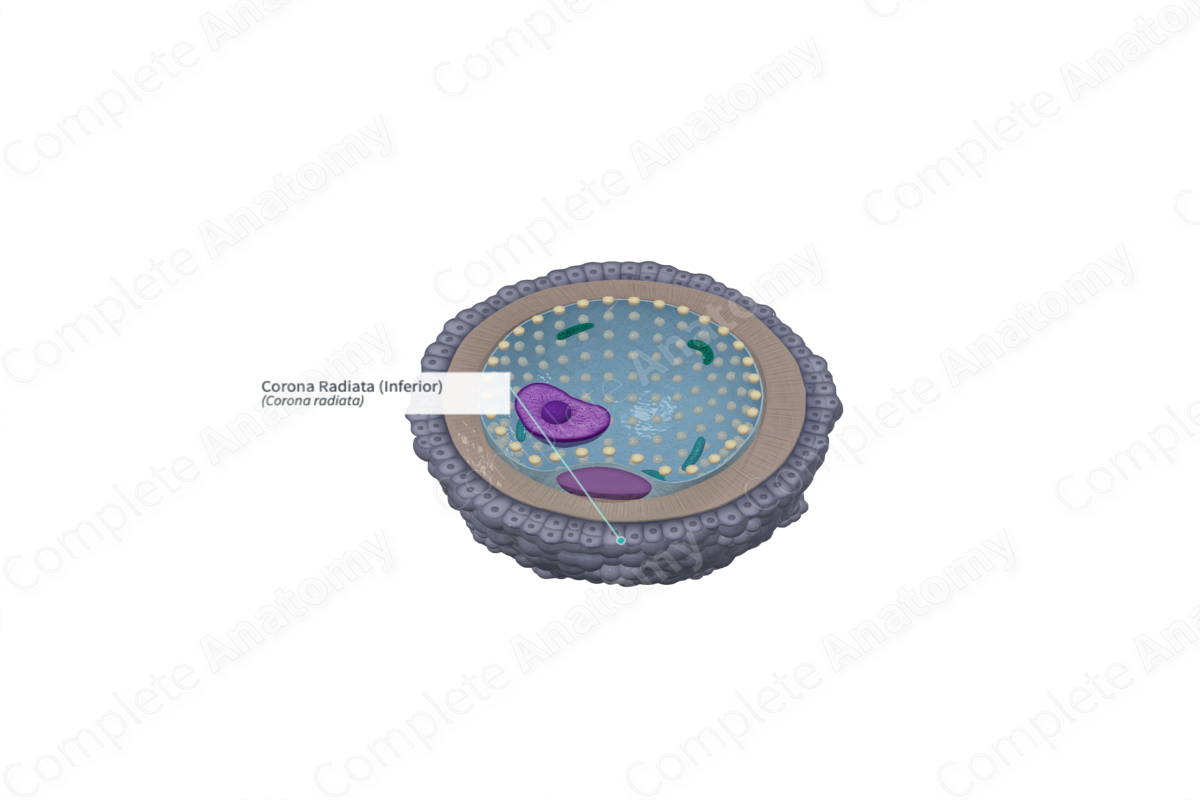
Quick Facts
The coronal radiata is a superficial layer of radially elongated follicle cells surrounding the zona pellucida of a secondary oocyte (Dorland, 2011).
Related parts of the anatomy
Structure
The coronal radiata is a layer of granulosa/follicle cells (referred to as cumulus cells) surrounding the zona pellucida of a secondary oocyte (Dorland, 2011). Additionally, the corona radiata forms the innermost layer of the cumulus oophorus. The corona radiata and cumulus oophorus span approximately 7-12.5 μm in diameter (Gardner et al., 2008; Harrison, Bonnar and Thompson, 2012).
The corona radiata forms during folliculogenesis. During the ovarian cycle, cumulus cells make intimate contact with the oocyte and deposit an acellular glycoprotein layer around the surface of the oocyte called the zona pellucida. Cumulus cells remain attached to the zona pellucida and form the corona radiata.
Microvillus projections of the cytoplasm of cumulus cells project through the zona pellucida and form gap junctions with microvilli of the oocyte.
Key Features/Anatomical Relations
The corona radiata surrounds the oocyte and is situated immediately external to the zona pellucida.
Function
Microvillus projections of the cumulus cells project through the zona pellucida and form gap junctions with microvilli of the oocyte. This provides a source of nutritional and regulatory substances, as well as exogenous proteins for the oocyte.
In order for fertilization to occur, a sperm must penetrate an oocyte by piercing through the corona radiata and zona pellucida that encircle the oocyte. This indirectly reduces the chances of multiple fertilization (Gray and Lewis, 1918).
List of Clinical Correlates
- Infertility
References
Dorland, W. (2011) Dorland's Illustrated Medical Dictionary. 32nd edn. Philadelphia, USA: Elsevier Saunders.
Gardner, D. K., Weissman, A., Howles, C. M. and Shoham, Z. (2008) Textbook of Assisted Reproductive Technologies: Laboratory and Clinical Perspectives. CRC Press.
Gray, H. and Lewis, W. H. (1918) Anatomy of the Human Body. Lea & Febiger.
Harrison, R. F., Bonnar, J. and Thompson, W. (2012) Fertility and Sterility: The Proceedings of the XIth World Congress on Fertility and Sterility, Dublin, June 1983, held under the Auspices of the International Federation of Fertility Societies. Springer Netherlands.
van Blerkom, J. and Motta, P. (2012) Ultrastructure of Human Gametogenesis and Early Embryogenesis. Springer US.
